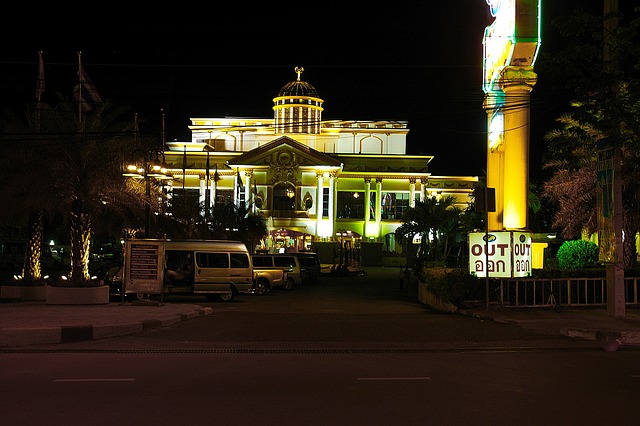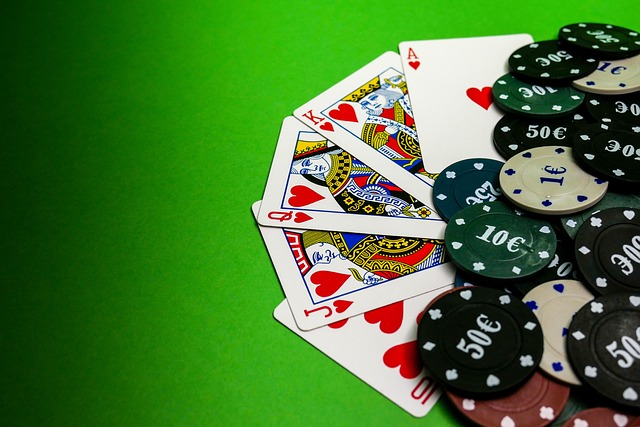Brick-and-mortar casinos have evolved their design to create immersive experiences, differentiate themselves in a competitive market, and attract players with more than just traditional gaming. This transformation includes sophisticated decor, interactive elements, and theme-based storytelling, enhancing the gambling atmosphere. Key to this success is strategic space planning, social interaction promotion, and diverse themes catering to various preferences. However, designing these casinos also involves adhering to strict regulations, implementing robust safety measures, and ensuring a well-lit, secure environment with clear signage and discreet surveillance while maintaining legal compliance.
In the competitive world of gambling, brick-and-mortar casinos continuously evolve their design to attract and retain players. This article explores the captivating journey from classic to contemporary casino aesthetics. We delve into creating immersive experiences through strategic layout and ambiance, while navigating regulatory considerations and safety measures. Discover how modern casino design transforms spaces into vibrant hubs of entertainment, blending tradition with cutting-edge innovation in the heart of land-based gambling destinations.
- The Evolution of Brick and Mortar Casino Design: From Classic to Contemporary
- Creating an Immersive Experience: Key Elements in Casino Layout and Ambiance
- Regulatory Considerations and Safety Measures in Physical Casino Design
The Evolution of Brick and Mortar Casino Design: From Classic to Contemporary

The design landscape of brick-and-mortar casinos has evolved significantly over the years, reflecting changing trends, technologies, and player preferences. In the classic era, casinos were often characterized by opulent decor, with plush red carpets, ornate chandeliers, and elaborate architecture that aimed to create a sense of glamour and sophistication. Slots machines were basic, with mechanical reels and simple lighting, while table games had standard layouts and minimal side decorations. The focus was primarily on creating an atmosphere that encouraged gambling and entertainment.
As we moved into the contemporary period, casino design began to incorporate more interactive and immersive elements. Digital displays replaced traditional slot machines, offering multi-layered bonus rounds and high-definition graphics. Table games were also enhanced with electronic versions that allowed for faster gameplay and integrated betting options. Modern casinos started to emphasize theme and storytelling, creating environments that transport players to different worlds, from ancient Egypt to futuristic spaceships. This shift not only makes the experience more engaging but also differentiates casinos in a competitive market, drawing in visitors seeking unique entertainment beyond the traditional gaming floor.
Creating an Immersive Experience: Key Elements in Casino Layout and Ambiance

In the realm of brick and mortar casinos, creating an immersive experience is paramount to attracting and retaining players. Key elements in casino layout and ambiance play a crucial role in setting the tone for guests’ entire visit. Strategically designed spaces that evoke a sense of excitement, luxury, and mystery can transform casual visitors into loyal patrons. For instance, using sophisticated lighting, rich textures, and captivating visual effects to mimic the energy of a vibrant city or exotic destination transport players from their everyday lives into an engaging atmosphere.
Furthermore, thoughtful placement of gaming tables, slots, and entertainment venues is essential. Intimate areas create a sense of exclusivity, while open spaces encourage movement and social interaction. Incorporating diverse themes, from classic to modern, allows casinos to cater to different preferences, ensuring that each guest finds their perfect niche. This customization enhances the immersive experience, encouraging longer stays and fostering a deeper connection with the casino brand.
Regulatory Considerations and Safety Measures in Physical Casino Design

In the design of brick-and-mortar casinos, regulatory considerations and safety measures are paramount. These physical spaces must adhere to strict local, state, and national laws governing gaming operations. This includes licensing requirements, age restrictions, and financial transaction protocols. Casino designers must incorporate clear signage and security systems to enforce these regulations and protect patrons.
Safety features extend beyond legal compliance to include environmental considerations like well-lit spaces to deter crime, emergency exit strategies, and smoke-free zones. The layout should facilitate easy movement for guests and staff while integrating discreet surveillance equipment for added security. A balanced approach that combines regulatory adherence with robust safety measures is essential to creating a welcoming yet controlled environment in brick-and-mortar casinos.
In the realm of brick and mortar casinos, design evolution has transformed spaces from classic to contemporary, focusing on creating immersive experiences. By integrating key elements in layout and ambiance, casinos enhance visitor engagement. However, as these physical venues navigate regulatory considerations and safety measures, they must strike a balance between innovation and adherence to standards to ensure a secure and enjoyable environment for all patrons.






